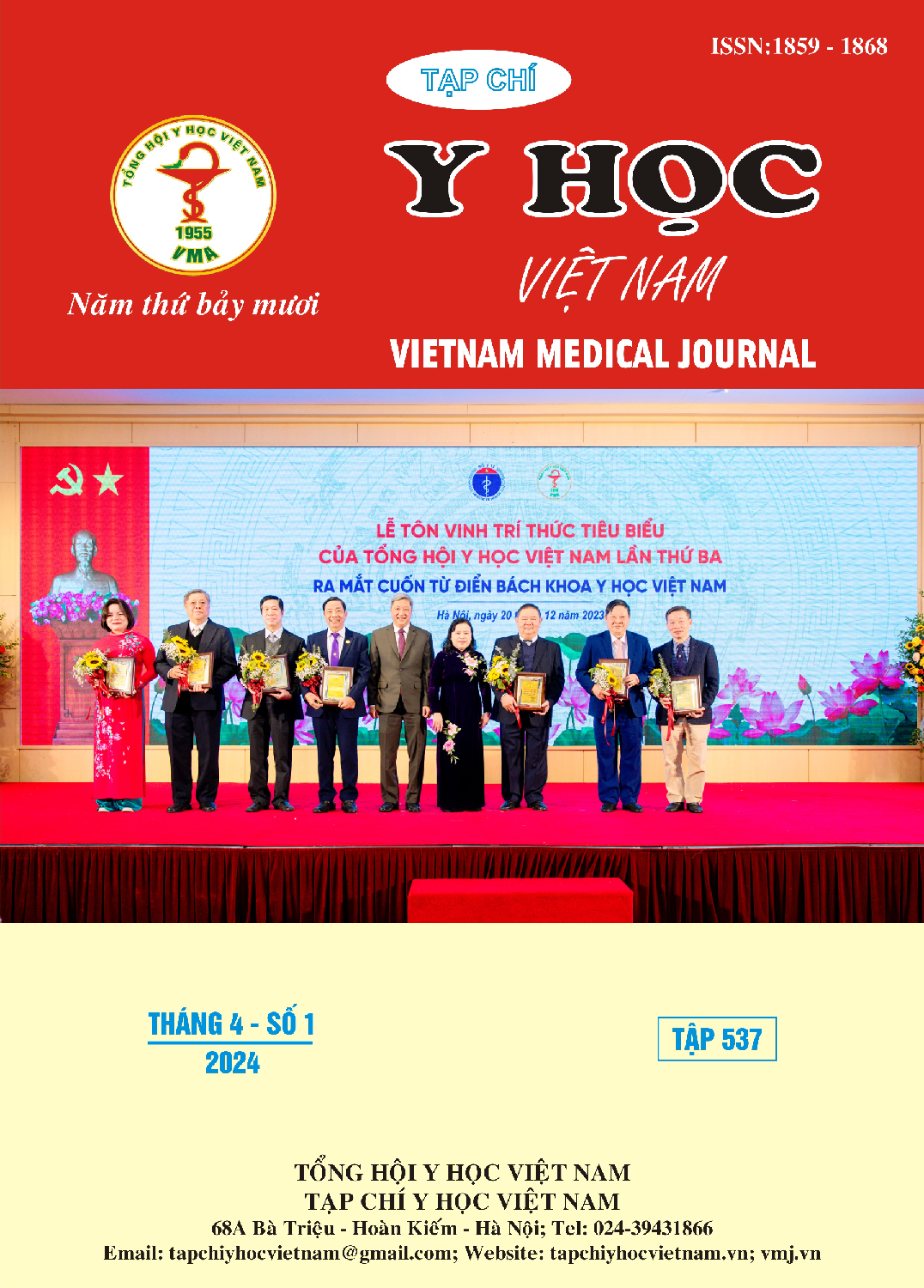CHANGING STRATEGY FOR CORONARY ARTERY INTERVENTION UNDER THE GUIDANCE OF OPTICAL COHERENCE TOMOGRAPHY
Main Article Content
Abstract
Background: Intravascular contrast tomography (OCT) is an imaging method to assess lesion morphology before and after intervention to help optimize intervention results. Objective: Evaluate the morphology of coronary artery lesions using OCT and the change in coronary intervention strategy based on OCT compared with contrast angiography. Materials and methods: cross-sectional descriptive study on 69 patients with coronary artery disease at Kien Giang General Hospital from January 2023 to December 2023. Results: Based on lesion morphology assessed on OCT, 20.5% of lesions were thrombosed, 60.3% of lesions had thin capsules (TCFA), 55.1% of lesions had lipid lakes and 6.4% Severe calcified lesions, 44.3% of lesions split in half. After evaluation OCT changed strategy 79.7% compared to coronary angiography. The number of stents increased by 23.7%, stent length increased by 45.8%, stent size increased by 58.3%, and number of balloons increased by 54.2%. After intervention, the rate of stent tip dissection was low at 8.5% (6/71), the rate of non-attachment after the first stent placement was up to 42.3%, requiring another high-pressure balloon to re-expand. 43.7% did not expand the stent to a full area of > 80% after stent placement and needed to use a high-pressure balloon to re-expand. Conclusion: Coronary intervention under OCT guidance helps better understand the morphological nature of the lesion, the distribution of lesions within the coronary artery, thereby creating optimal intervention strategies and results.
Article Details
Keywords
coronary artery, OCT, coronary intervention strategy.
References
2. Bergmark Brian, Dallan Luis AP, Pereira Gabriel TR, Kuder Julia F, Murphy Sabina A, et al. (2022), "Decision-making during percutaneous coronary intervention guided by optical coherence tomography: insights from the LightLab initiative". Circulation: Cardiovascular Interventions, 15 (11), pp. 872-881.
3. Chamié Daniel, Bezerra Hiram G, Attizzani Guilherme F, Yamamoto Hirosada, Kanaya Tomoaki, et al. (2013), "Incidence, predictors, morphological characteristics, and clinical outcomes of stent edge dissections detected by optical coherence tomography". JACC: Cardiovascular Interventions, 6 (8), pp. 800-813.
4. Maehara Akiko, Mintz Gary S, Witzenbichler Bernhard, Weisz Giora, Neumann Franz-Josef, et al. (2018), "Relationship between intravascular ultrasound guidance and clinical outcomes after drug-eluting stents: two-year follow-up of the ADAPT-DES study". Circulation: Cardiovascular Interventions, 11 (11), pp. e006243.
5. Min Hyun-Seok, Yoo Ji Hyeong, Kang Soo-Jin, Lee June-Goo, Cho Hyungjoo, et al. (2020), "Detection of optical coherence tomography-defined thin-cap fibroatheroma in the coronary artery using deep learning". EuroIntervention: journal of EuroPCR in collaboration with the Working Group on Interventional Cardiology of the European Society of Cardiology, 16 (5), pp. 404-412.
6. Osborn Eric A, Johnson Michael, Maksoud Aziz, Spoon Daniel, Zidar Frank J, et al. (2022), "Safety and efficiency of percutaneous coronary intervention using a standardised optical coherence tomography workflow". Eurointervention: Journal of Europcr in Collaboration with the Working Group on Interventional Cardiology of the European Society of Cardiology, pp. EIJ-D.


